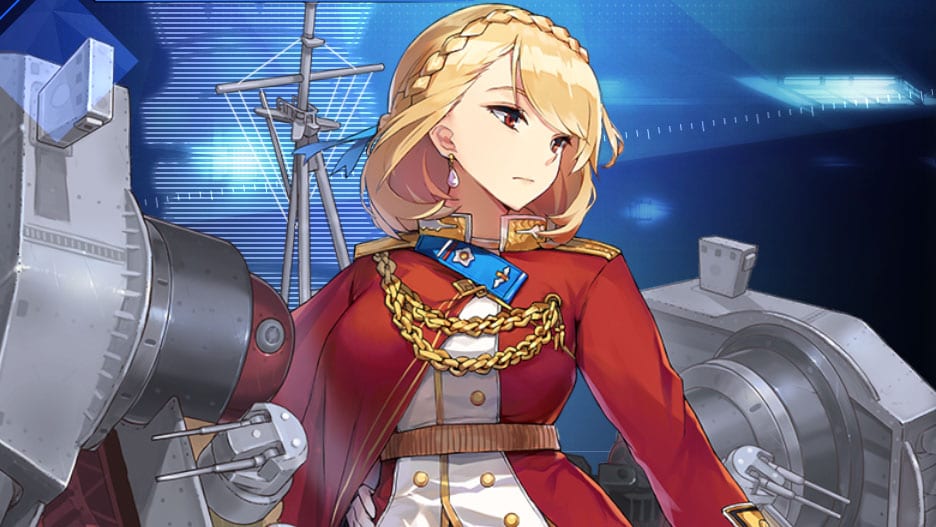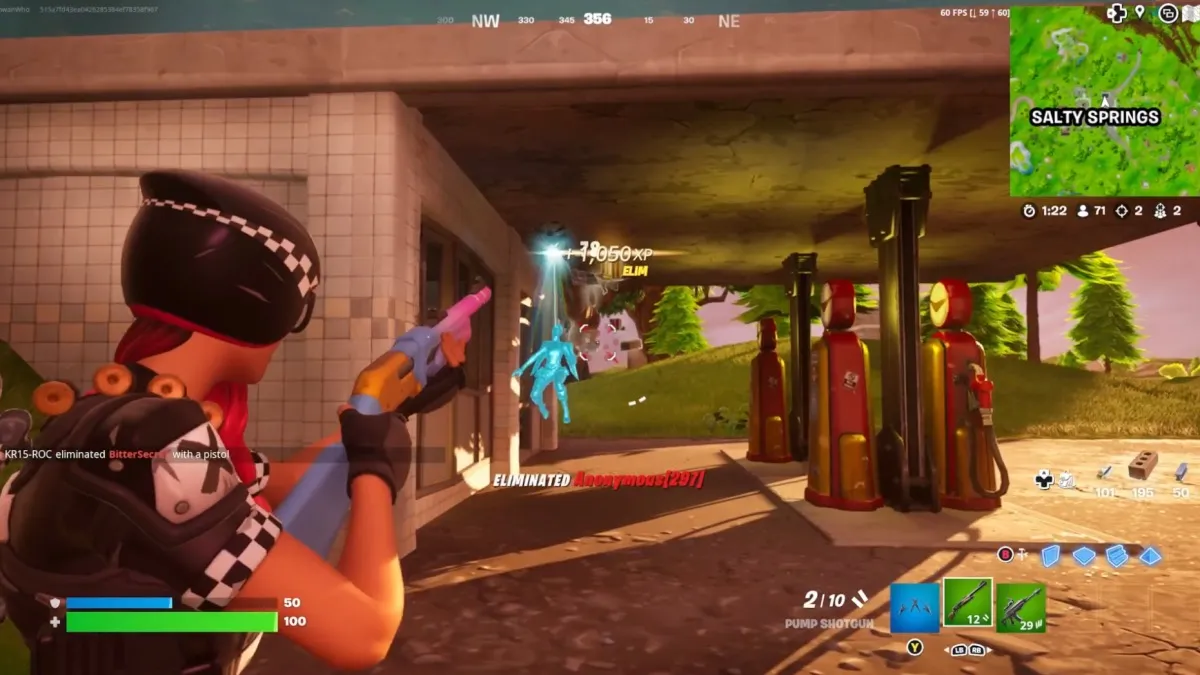Azur Lane: Crosswave on PS4
Azur Lane: Crosswave is a strange title from publisher Idea Factory and is based on a blockbuster hit mobile game in Japan. While you don’t need to know anything about the mobile game to play this release, the game doesn’t explain much outside of the bare minimum and expects you to shrug and go along with it.

While it doesn’t exactly fit the definition of a third-person shooter, the game still aligns that way, along with some aspects of shoot ’em up (shmup) games, but without going too far and becoming a bullet hell. The story is presented in the expected ‘visual novel with text boxes’ kinda way.
Azur Lane: Crosswave takes place in what seems to be an alternate World War 2 atmosphere. Four nations modeled after the biggest WW2 superpowers preside over the world, but there is never a real hint of conflict between them that out reaches the bounds of usual anime rivalry. Oh, and all entire roster of characters are all WW2 ships as girls.
That’s right. every girl is also a ship. An actual, real life (at least in the era of WW2) ship, part of a race called the Kansen. Their names are all taken from legitimate ship names and fit with the craft of their respective nations.
Character design is excellent, and on certain girls the ship parts are subtly woven into outfits or carried as weapons. Characters also follow the usual anime girl trend of some having exaggerated proportions or being scantily dressed.

As far as the four main nations go, there is the Eagle Union, a democratic federation that values freedom and harmony, entirely based on the USA. Following that is the Royal Navy, a constitutional monarchy that prides itself on history and nobility, standing in for Great Britain.
Iron Blood is a militaristic empire with a focus on advancing their own technology, a clear translation of Nazi Germany. Last there is the Sakura Empire, an island nation that abides by its own tradition and culture, easily identifiable as Japan. Alongside these there are a couple very minor characters from the Dragon Empry, which leaves no question that it’s meant to be China.
These four nations exist alongside the puzzling Sirens, which no nation interacts with or understands. The story mode sees the player taking control of Shimakaze, a destroyer from the Sakura Empire. In a very Top Gun-esque beginning, Shimakaze and reluctant partner Suruga happen upon mass-produced Siren ships (yes, in a world of ship girls there also exist non-girl ships) and fight them, sinking them all.
As some of these were transport ships, they lose their cargo in the sea, spilling forth very strange green cubes that defy physics entirely. The Sakura Empire doesn’t wish to share this find with the other nations on the off chance they happen upon the cubes and devise a plan to cover it up. The Sakura Empire invites the other nations to a Joint Military Exercise and treat it as a sort of competition, making gathering the cubes the way to achieve victory, ensuring the other nations unknowingly do all the work for them.

The map in Azur Lane: Crosswave is all in 2D with your character able to move over the water and in between islands. The maps are never large enough so you lose track of what you need to do next, and the compass in the top left corner always tells you the way to the closest event. There are also loot chests hidden on the map that spawn after certain events, but due to the maps never scrolling that far, they are easy to find. Silver chests usually have a couple items used for weapon strengthening whereas gold chests have new weapons and eventual advancement items.
Events come in only a few flavors. There are green events which usually don’t advance the story, but give you a brief scene of two or so characters interacting in ways that flesh out their personalities. Red events are the things that matter to the story and push things forward, Green battle events are usually similar to the normal events, side battles that only serve to help lead to the bigger fights. Red battle events are usually the big thing and signal that the end of the chapter is coming.
Combat is where Azur Lane: Crosswave both shines and thins out. Before any battle begins you are allowed to set up your six-girl party. Three slots are for attackers and you can take control of any of them during battle with left and right on the d-pad. Though for a period of time, you’ll be sitting at a party of two because it takes time to earn up enough to buy a third. The other three slots are for support characters that provide occasional buffs and heals.
In the middle of battle, it’s hard to figure out which support character is doing what so it’s easy to stagnate that side of the party and not switch them out when you know one at least of the three is a healer.

As there are several different classes of ship girl the game provides plenty of opportunities to work on loadouts. For example, torpedoes are a main weapon for most Kansen, but you have to make your sacrifice somewhere. Normal torpedoes hit hard but are a straight shot and can miss. However, there are torpedoes with a magnetic property that home in on a target once close, but you lose a good portion of the damage.
There are two shops in Azur Lane: Crosswave, one that trades just money and another that trades materials and occasionally also money. As there is a large roster it’s hard to know what is better without several rounds of back and forth checking so it’s always easier to buy and check directly. Money isn’t a problem and later there are items used for the sole purpose of raising funds and nothing more.
As you start with Shimakaze she’s very easy to work with and treads into being overpowered very early with the right additions. Her main cannon, set to R1 by default, is a cannon with infinite ammo as the reload is fast enough that it doesn’t take a break. She also has a torpedo launcher with a three segment gauge that requires a bit of time to fill up but can be fired one at a time whenever the indicated gauge fills. She can also be equipped with an anti-air cannon that fires at aircraft automatically and she, like every other girl, has two slots for items that give passive bonuses. All weapons and items can be upgraded with the right materials gained through either battle or loot chests.
Battles take place in large square arenas and as far as controls go, there is a lock-on function that can be toggled and is the game’s form of auto-aim. The game controls perfectly and the girls all possess great mobility, the ability to further upgrade their speed only adds to this. The problem with the arena is that the boundaries aren’t apparent until you are just about right on them, which can lead to getting backed into a corner or wall.

Combat in Azur Lane: Crosswave tends to follow the same formula. You spawn in and there are usually a couple battleships to fight and planes to take down and then you are directed to follow a green arrow a short way, before getting thrown into a fight with another Kansen. Then it’s mostly a job of circle strafing and avoiding their attacks while whittling down their sometimes frustratingly large HP bar.
Experimenting with different Kansen is when the combat builds back up. Shimakaze is great for straightforward damage, but isn’t always that fun to actually play. The many aircraft carriers provide a different way to battle against enemy ships and Kansen alike and the existence of multiple types of aircraft changes how you fight and position yourself.
As far as environments go, there aren’t many unique locations where battles take place, and they are mostly pretty empty, but the far off mountains or darkened sky with aurora borealis lights give a nice sense of atmosphere without being too overbearing. The water effects are a nice touch and portrays fighting on the high sea appropriately and gives it some welcomed flair. Fighting at night and seeing the bullets fly over the water almost turns the whole spectacle into a light show.

Unlocking new girls/Kansen is rather simple, as the roster page lists out the amount of “A points” needed. These points are gained through battle, but when story battles barely give out more than 200 per battle, even at the end game, it’s a small grind to buy them all. Buying certain Kansen unlocks special character episodes, small events accessed from the main menu (separate from the menu accessed from the in-game map) that don’t have any real importance on the story.
At the start of the first chapter of Azur Lane: Crosswave, you gain access to Extreme Battles which are standalone fights that can be undertaken to gain items, money, and XP at a time in the game when story battles are somewhat scarce. There is also a photo mode where you can make you own photo shoots and set scenes however you wish.

Azur Lane: Crosswave does a good enough job of offering plenty of waifus and at the beginning of the game only gives enough battles for you to crave more. However, once they start to be more common, their enjoyment level sinks and requires the player to start changing things up themselves to avoid boredom.
It isn’t a poorly made game at all. In the middle of combat when you can take a moment to watch the water move around your character and buckle when torpedoes blast through it you understand how nice these touches are. There is enough variance to make sure for a large majority of story battles you have a way of coming in with a fresh look, but the battles kind of always play out the same way, so it’s frustrating when the build you brought isn’t good enough and you struggle to get through what you were clearing before without any problems.
For more information on how we review games, check out Twinfinite’s review policy here.
- Combat can be approached from many angles.
- Great character designs.
- Great amount of available weaponry.
- Awesome water effects.
- Combat quickly becomes stale and repetitive.













Updated: Apr 2, 2021 02:31 pm